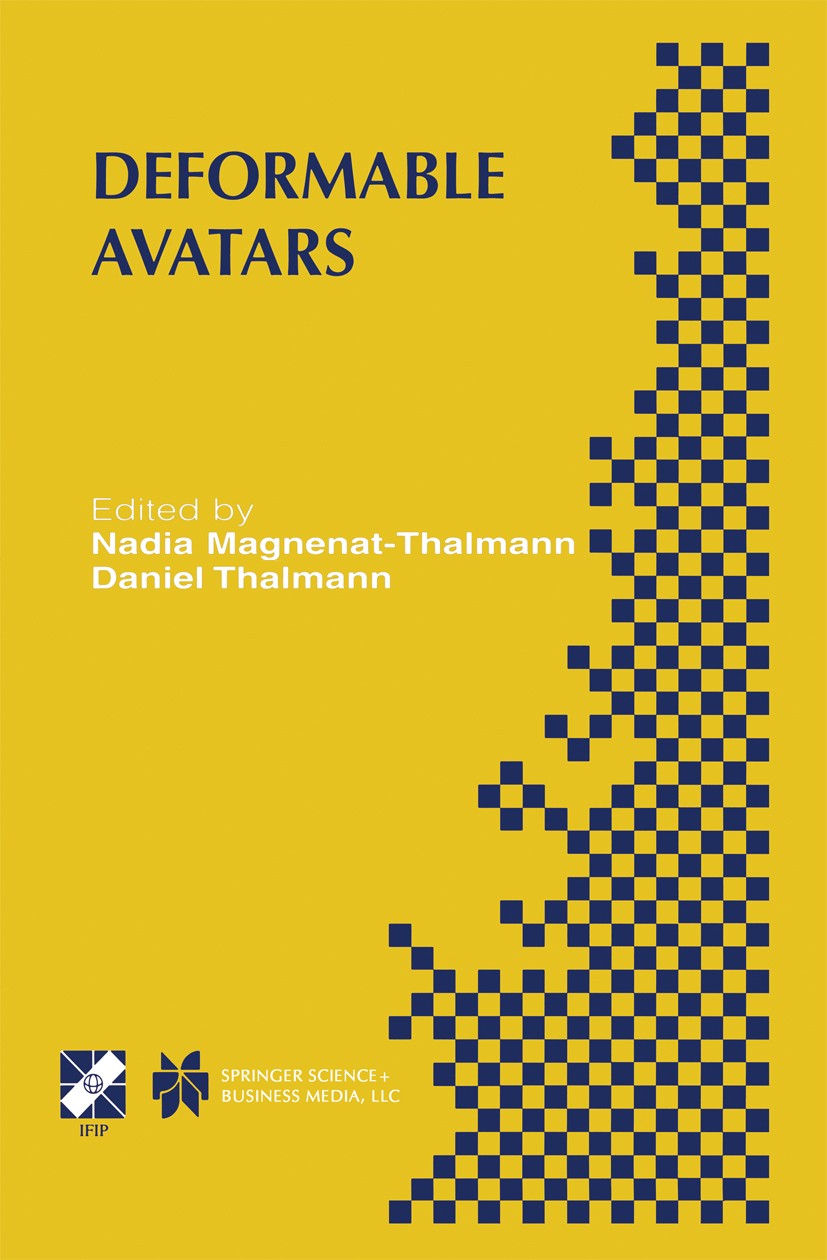| 书目名称 | Deformable Avatars |
| 副标题 | IFIP TC5/WG5.10 DEFO |
| 编辑 | Nadia Magnenat-Thalmann,Daniel Thalmann |
| 视频video | http://file.papertrans.cn/265/264819/264819.mp4 |
| 丛书名称 | IFIP Advances in Information and Communication Technology |
| 图书封面 |  |
| 描述 | Deformable avatars are virtual humans that deform themselves during motion. This implies facial deformations, body deformations at joints, and global deformations. Simulating deformable avatars ensures a more realistic simulation of virtual humans. The research requires models for capturing of geometrie and kinematic data, the synthesis of the realistic human shape and motion, the parametrisation and motion retargeting, and several appropriate deformation models. Once a deformable avatar has been created and animated, the researcher must model high-level behavior and introduce agent technology. The book can be divided into 5 subtopics: 1. Motion capture and 3D reconstruction 2. Parametrie motion and retargeting 3. Musc1es and deformation models 4. Facial animation and communication 5. High-level behaviors and autonomous agents Most of the papers were presented during the IFIP workshop "DEFORM ‘2000" that was held at the University of Geneva in December 2000, followed by "A V AT ARS 2000" held at EPFL, Lausanne. The two workshops were sponsored by the "Troisü!me Cycle Romand d‘Informatique" and allowed participants to discuss the state of research in these important areas. x Preface |
| 出版日期 | Book 2001 |
| 关键词 | 3D; Augmented Reality; Extension; agents; animation; autonom; autonomous agents; behavior; control; modeling; |
| 版次 | 1 |
| doi | https://doi.org/10.1007/978-0-306-47002-8 |
| isbn_softcover | 978-1-4757-4930-4 |
| isbn_ebook | 978-0-306-47002-8Series ISSN 1868-4238 Series E-ISSN 1868-422X |
| issn_series | 1868-4238 |
| copyright | IFIP International Federation for Information Processing 2001 |
 |Archiver|手机版|小黑屋|
派博传思国际
( 京公网安备110108008328)
GMT+8, 2025-12-20 09:05
|Archiver|手机版|小黑屋|
派博传思国际
( 京公网安备110108008328)
GMT+8, 2025-12-20 09:05


